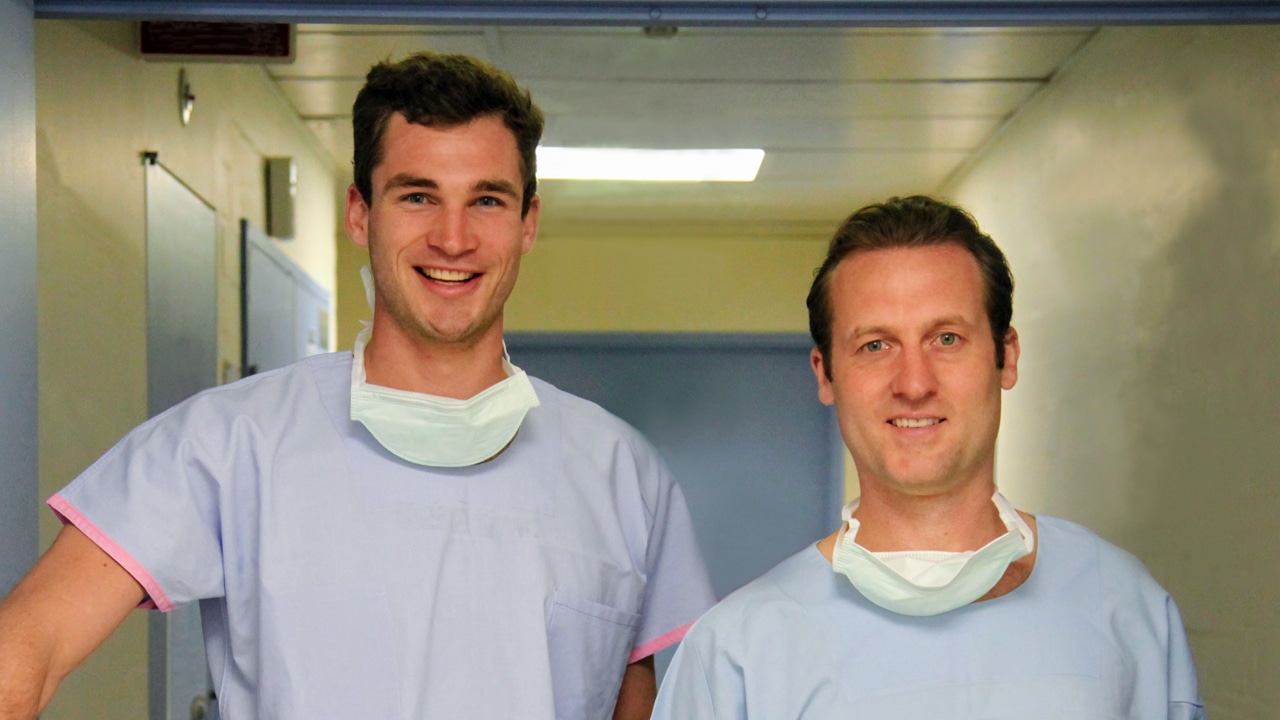Safer surgery for babies with open spina bifida
By Hudson Institute communications. Reviewed by Associate Professor Ryan Hodges

A team of researchers at Hudson Institute have discovered how to make in utero surgery safer for babies with open spina bifida, by using warm, moist air to distend a mother’s uterus.
All expectant mothers receive a routine ultrasound mid-way through their pregnancy. But for between 18 and 25 pregnancies in Australia each year, this reveals a potentially life-changing condition called open spina bifida—a hole in the baby’s spine.
This hole exposes the baby’s spinal cord to the contents of the uterus, causing lifelong paraplegia or leg weakness, bladder and bowel dysfunction, and brain damage.
Also known as myelomeningocele, open spina bifida is the most common and unfortunately, most severe form of the disease.
A window of opportunity

Surgeons in the US and Europe are able to close the hole during the pregnancy and protect the spinal cord from further damage—dramatically reducing morbidity and improving long-term outcomes for these children.
These surgeries are performed using a ‘keyhole’ approach, using a camera and surgical instruments inserted into the space around the baby. To clearly see with the camera and give enough space for surgery, fluid surrounding the baby must be drained, and the mother’s uterus must be distended (expanded using pressure) with carbon dioxide (CO2) gas. This distention is known as amniotic insufflation.
While this procedure is mostly successful, the current way that amniotic insufflation is performed is thought to place unnecessary stress on the fetus and may actually be limiting the potential benefits of this life-changing procedure.
Current insufflation techniques, lead to some CO2 used to distend the uterus inadvertently entering the baby’s blood—increasing acidity levels, placing stress on the fetal heart and potentially having detrimental effects on the baby’s developing brain.
Making surgery safer
PhD student Ben Amberg and Associate Professor Ryan Hodges led a study published in Ultrasound in Obstetrics and Gynecology, which focused on optimising this amniotic insufflation procedure and minimising harm to the developing baby.
Using a pre-clinical model, the team discovered that heating and humidifying (mixing with water vapour) the CO2 used to distend the uterus dramatically improves how well a fetus can tolerate surgery.
The team found that by heating and humidifying the CO2, the fetus absorbed significantly less CO2 from the uterus. This reduced acidity levels, relieved stress on the fetal heart and dramatically improved the baby’s ability to tolerate surgery.
“Fetus’ undergoing surgery for open spina bifida have to withstand the stress of running a marathon” said Ben Amberg.
“Heated, humidified CO2 optimises the conditions that marathon has to be run in.”
A hopeful future
“While it’s common to get this surgery done in the US and Europe we don’t routinely do it in Australia, so this is an enormously exciting prospect to see this first hand,” said Mr Amberg.
The team hope that these improvements in amniotic insufflation technique could pave the way for intra-uterine surgery to be routinely available in Australia for babies with open spina bifida in the coming years.
Collaborators | Monash Health, Monash University
This research was supported by | Monash University (PhD Stipend), Hudson Institute (Harold Mitchell Fellowship), NHMRC (Professor Stuart Hooper)
In this article
About Hudson Institute
Hudson Institute’ s research programs deliver in three areas of medical need – inflammation, cancer, women’s and newborn health. More
Hudson News
Get the inside view on discoveries and patient stories
“Thank you Hudson Institute researchers. Your work brings such hope to all women with ovarian cancer knowing that potentially women in the future won't have to go through what we have!”





